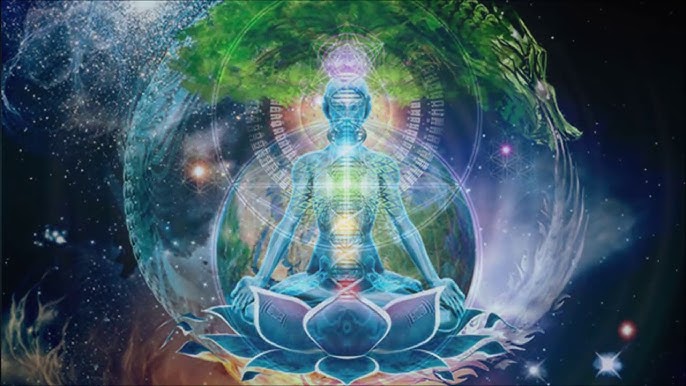Meditation is a transformative practice that soothes the mind, deepens self-awareness, and promotes spiritual growth. However, many practitioners report experiencing body heat during meditation. While it may seem unusual or concerning, this sensation is a natural part of the process. It often indicates energy movement, emotional release, or internal purification. In this article, we’ll explore why body heat occurs during meditation, its connection to energy flow, and effective ways to manage it for a comfortable and enriching practice.
Why Does Body Heat Increase During Meditation?
Experiencing body heat during meditation is a natural phenomenon caused by the activation of energy channels, emotional release, and improved circulation. Here are the main reasons behind this sensation:
1. Activation of Kundalini Energy
One of the primary reasons for rising body heat during meditation is the activation of Kundalini energy. Kundalini, believed to lie dormant at the base of the spine, rises through the energy channels (nadis) during deep meditation. This energy movement generates internal heat, which helps cleanse karmic deposits and eliminate energetic blockages. As Kundalini ascends, you may feel warmth in the spine, abdomen, or even throughout the body.
2. Emotional Release and Healing
Meditation often brings unresolved emotions to the surface. When you access deeper layers of consciousness, old emotions such as anger or grief may be released. These emotional purges can manifest as bodily sensations, including heat. Just as anger can make you feel flushed, the body may express emotional release through warmth or sweating during meditation.
3. Increased Blood Circulation and Energy Flow
Stillness during meditation boosts internal awareness, making you more sensitive to bodily sensations. As you unwind, blood circulation increases, making the subtle energy flow more perceptible. This enhanced energy movement can create a warming effect, making the body feel hot.
Effects of Excessive Heat During Meditation
While mild warmth is normal, excessive heat can sometimes cause discomfort. You may experience:
- Headaches or restlessness due to energy surges.
- Sweating or a flushed face, indicating rising body temperature.
- Fatigue or mental resistance, especially during long meditation sessions.
- Localized sensations, such as warmth in the spine or limbs, as energy moves through the body.
How to Manage Excess Body Heat During Meditation
To prevent discomfort from rising body heat during meditation, you can follow effective cooling techniques, breathing exercises, and dietary adjustments. Here’s how:
1. Cooling Techniques
To balance the internal heat, adopt simple cooling practices:
- Cold Water Bathing: Taking two baths a day with cold or lukewarm water helps regulate body temperature. Start by pouring water over your feet, wait a few minutes, and then pour it over your head. This sequence helps the body release excess heat gradually.
- Apply Oil on the Body: Massaging oil on your navel or the base of the spine can help dissipate internal heat. On specific days, practicing an oil bath routine (Wednesdays and Saturdays for men, Fridays and Tuesdays for women) can effectively reduce heat.
2. Breathing and Relaxation Techniques
- Cooling Breathwork: Use breathing techniques like Sheetali Pranayama (inhaling through the tongue and exhaling through the nose) to cool the body.
- Mindful Movements: If you feel overly hot, gently stretch or change your posture to redistribute the heat evenly across your body.
3. Dietary Adjustments
Your diet greatly influences the regulation of body temperature:

- Include Cooling Foods: Consume ghee, coconut water, and cooling fruits like watermelon or cucumber to counteract internal heat.
- Avoid Heating Foods: Steer clear of brinjal, regular potatoes, and spicy foods before or after meditation, as they can increase body warmth.
- Hydrate with Mineral-Rich Water: Soak jeera (cumin) seeds or clearing nut (thetrankottai) overnight in water stored in a clay pot. This mineral-rich water helps neutralize internal heat and maintains hydration.
Signs You Should Pause or Seek Guidance
While experiencing warmth during meditation is normal, certain symptoms may indicate the need to pause or seek expert advice. Here are the signs to watch for:
1. Physical Discomfort or Pain
While mild heat sensations are normal, severe discomfort, sharp pain, or burning feelings may indicate an imbalance. If you experience consistent headaches or unusual body reactions, focus on the Mooladhara (root chakra) during meditation. This technique helps redistribute excess energy and prevents it from accumulating in the head.
2. Bleeding or Physical Symptoms
If you notice physical symptoms like bleeding during or after meditation, stop the practice immediately. Give your body a week to recover before resuming.
3. Consult a Meditation Teacher
If the heat becomes overwhelming or leads to discomfort, consult an experienced meditation teacher. They can help you refine your practice and offer personalized guidance.
Embracing Heat as Part of the Meditation Journey
Rather than viewing body heat during meditation as a problem, consider it a sign of progress. The heat represents the internal purification and energetic awakening taking place. With patience, mindful techniques, and proper self-care, you can embrace this sensation as part of your spiritual growth.
By adopting cooling practices, making dietary adjustments, and staying grounded, you can comfortably continue your meditation journey, allowing the heat to serve as a purifying force rather than a hindrance.

